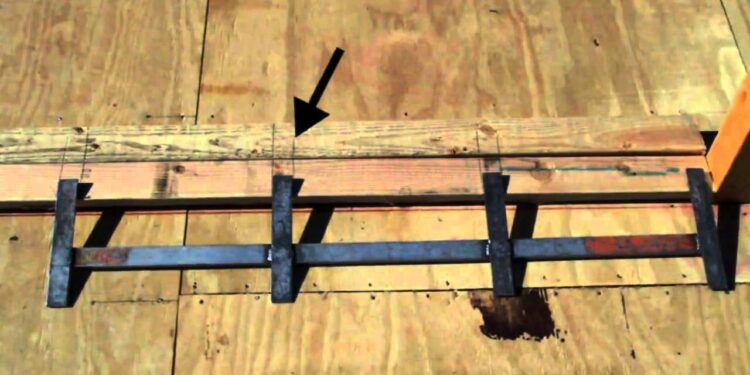Embarking on a house framing project requires careful consideration of the tools you will use. From selecting the right tools based on the type of project to ensuring quality and durability, this guide will help you navigate the essential aspects of choosing the right tools for house framing.
As you delve into the intricacies of house framing tools, you'll uncover valuable insights that can streamline your project and enhance the overall efficiency of your work.
Factors to consider when choosing tools for house framing
When embarking on a house framing project, it is crucial to carefully consider several factors to ensure the right tools are selected for the job. Factors such as the type of framing project, the size and scale of the project, and the material of the frame play a significant role in determining the most suitable tools to use.
Type of Framing Project
- For new construction projects, tools that are durable and capable of handling heavy-duty work are essential. Nail guns, power saws, and framing hammers are commonly used in new construction framing.
- Renovation projects may require more precise tools for working in existing spaces. Hand tools like speed squares, levels, and pry bars are commonly used in renovation framing.
Size and Scale of the Project
- Large-scale projects may benefit from the use of power tools to increase efficiency and productivity. Circular saws, nail guns, and pneumatic framing nailers are often used in large-scale framing projects.
- Smaller projects may require more manual tools for detailed work. Hand saws, chisels, and hand planes are commonly used in smaller-scale framing projects.
Material of the Frame
- When framing with wood, tools such as circular saws, framing hammers, and nail guns are ideal for securing wooden frames together.
- For steel framing projects, tools such as metal cutting saws, metal framing hammers, and self-tapping screws are commonly used to work with steel frames.
Essential tools for house framing
When it comes to house framing, having the right tools is crucial for ensuring precision and efficiency in the construction process. Here, we will identify and describe the basic tools required for house framing, discuss the role of power tools, and compare traditional hand tools with modern power tools.
Basic Tools for House Framing
- Framing Hammer: A framing hammer is an essential tool for driving nails into wood quickly and efficiently. It is heavier than a regular hammer, providing more power with each swing.
- Framing Square: A framing square is used to ensure that corners are square and walls are straight. It helps carpenters make accurate measurements and cuts during the framing process.
- Level: A level is used to ensure that surfaces are plumb and level, crucial for maintaining the structural integrity of the building.
- Tape Measure: A tape measure is necessary for taking accurate measurements and ensuring precise cuts during framing.
Role of Power Tools in House Framing
Power tools have revolutionized the construction industry, making tasks quicker and more efficient. In house framing, power tools are commonly used for cutting, drilling, and fastening. Some examples of commonly used power tools in house framing include:
- Power Drill: A power drill is used for drilling holes and driving screws into wood, making it an essential tool for framing.
- Circular Saw: A circular saw is used for making straight and angled cuts in lumber, helping carpenters quickly and accurately cut framing materials.
- Nail Gun: A nail gun is used for quickly driving nails into wood, significantly speeding up the framing process compared to using a hammer.
Comparison of Hand Tools and Power Tools
While traditional hand tools have their place in house framing and are often preferred for certain tasks requiring precision, modern power tools offer increased speed and efficiency. Hand tools may provide more control and accuracy for intricate work, but power tools can significantly reduce labor time and effort
.
Quality and durability considerations
Investing in high-quality tools for house framing projects is essential for ensuring a successful and efficient construction process. Quality tools not only provide better performance but also contribute to the overall safety of the workers involved. Here are some key points to consider when it comes to quality and durability of tools for house framing:
Importance of quality tools
- High-quality tools are more reliable and accurate, leading to better results in the framing process.
- Quality tools are built to withstand the rigors of construction work, reducing the risk of breakage or malfunction during use.
- Investing in quality tools can save money in the long run, as they tend to have a longer lifespan and require less frequent replacement.
Impact of durability on efficiency and safety
- Durable tools can withstand heavy use and rough handling, ensuring that they remain functional throughout the project.
- Tools that are not durable may break or malfunction, causing delays in the construction process and potential safety hazards for workers.
- By choosing durable tools, workers can focus on the task at hand without worrying about equipment failures or injuries.
Tips for assessing quality and durability
- Look for tools made from high-quality materials such as steel or aluminum, as they tend to be more durable and long-lasting.
- Read reviews and feedback from other users to get an idea of the tool's performance and durability in real-world conditions.
- Check for warranties or guarantees offered by the manufacturer, as this can be an indicator of the tool's quality and durability.
Budget-friendly options and cost-effective tool choices
When it comes to choosing tools for house framing on a budget, it's important to find options that offer a good balance between affordability and quality. By being strategic in your selection process, you can save money without compromising on the tools' performance.
Investing in Versatile Tools
One cost-effective strategy is to invest in versatile tools that can be used for multiple purposes in house framing. Look for tools that serve more than one function, such as a combination square that can be used for measuring, marking, and checking angles.
This way, you get more value out of each tool you purchase.
Comparing Brands and Price Points
Another way to make cost-effective tool choices is to compare different brands and price points. Some brands may offer similar quality tools at a lower price compared to others. Take the time to research and read reviews to find the best deals without compromising on durability and performance.
Remember, a higher price tag doesn't always guarantee better quality.
Outcome Summary
Choosing the right tools for house framing is not just about having the necessary equipment; it's about optimizing your workflow and ensuring the success of your project. By investing in quality tools, considering your budget, and evaluating the specific needs of your project, you can set yourself up for a seamless and productive house framing experience.
FAQ Corner
What factors should I consider when choosing tools for house framing?
Consider the type of framing project, size and scale of the project, and the material of the frame (wood, steel) to make informed tool choices.
What are some essential tools for house framing?
Basic tools like framing hammer and framing square are crucial. Power tools play a significant role as well, enhancing efficiency in framing projects.
Why is quality and durability important in house framing tools?
Investing in high-quality tools ensures efficiency and safety during the framing process. Durability impacts the longevity and effectiveness of your tools.
How can I find budget-friendly tools for house framing?
Look for versatile tools that offer quality at a reasonable price. Compare different brands and prioritize tools that offer long-term value.








